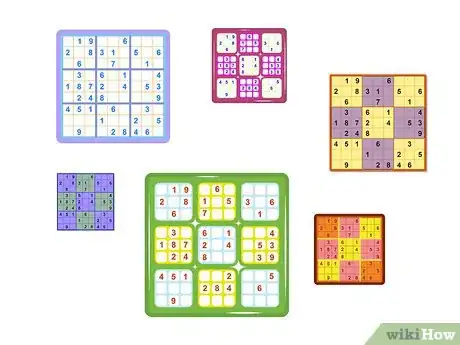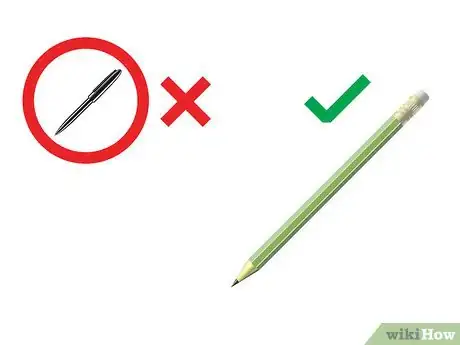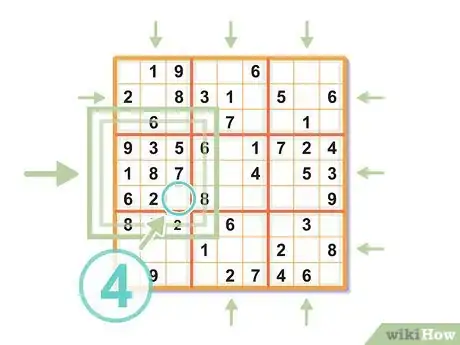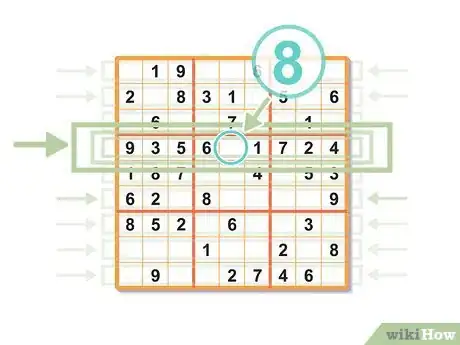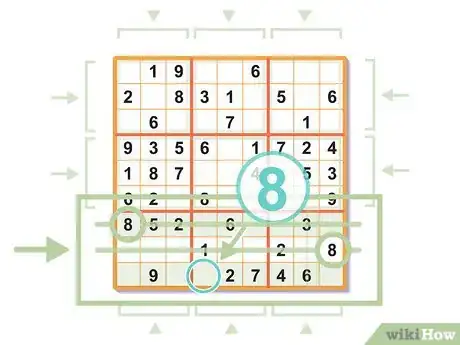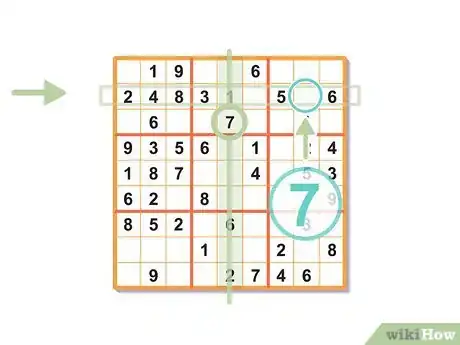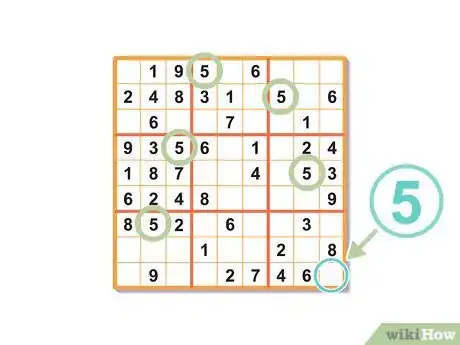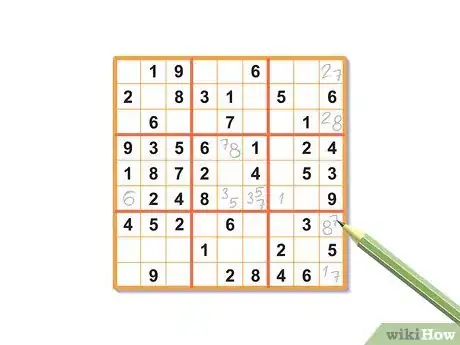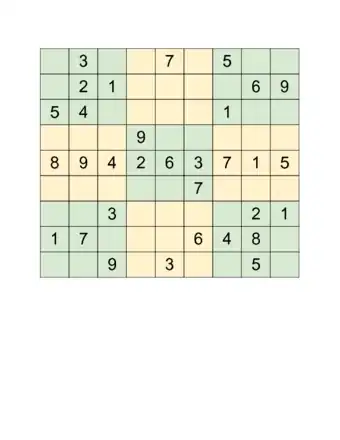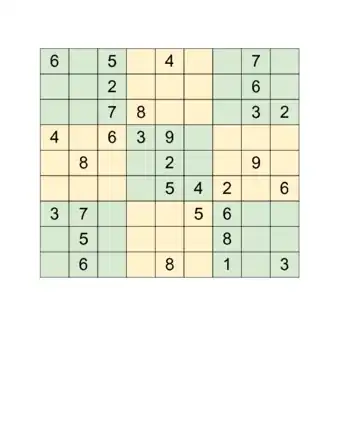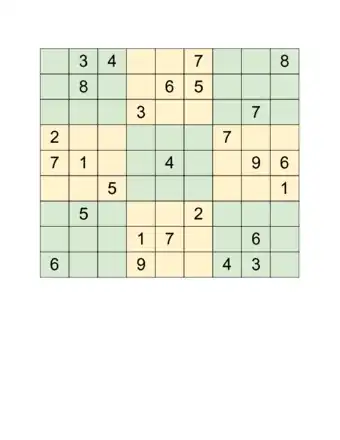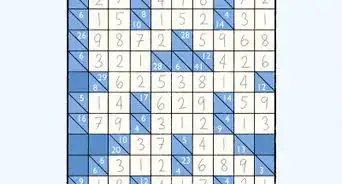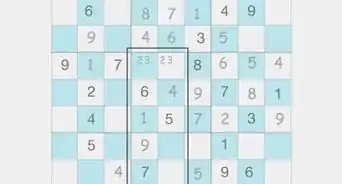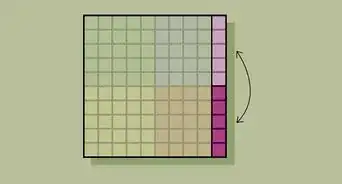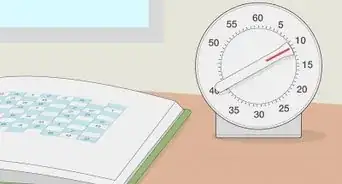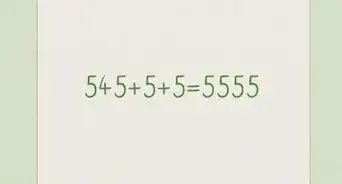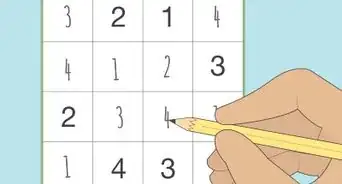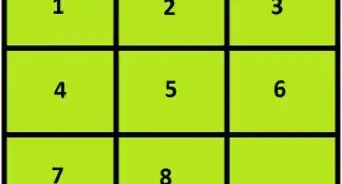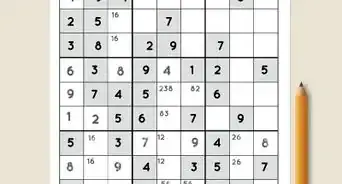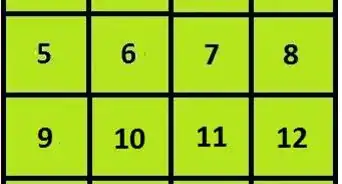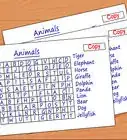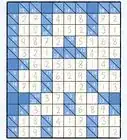This article was co-authored by wikiHow Staff. Our trained team of editors and researchers validate articles for accuracy and comprehensiveness. wikiHow's Content Management Team carefully monitors the work from our editorial staff to ensure that each article is backed by trusted research and meets our high quality standards.
This article has been viewed 2,499,411 times.
Learn more...
You want to try sudoku, but you don't know where to begin. Sudoku looks hard because it involves numbers, but in reality, it's not math-based. Even if you think you're bad at math, you can still do well at sudoku. In fact, the numbers could be replaced with letters or symbols and the results would be the same; it's all about recognizing the pattern. Start by learning the basics of sudoku, then move on to learning the beginning and advanced techniques.
Steps
Figuring Out the Basics
-
1Learn the setup. In a typical sudoku, you'll have a square grid of 9 large squares. Inside each of those larger squares will be 9 smaller squares. When faced with a puzzle, some of those smaller squares will be filled in with numbers from 1 to 9. More difficult puzzles will have fewer squares filled in.[1]
- The larger squares are often outlined with a darker line, while the smaller squares have a thinner line. Also, sometimes the larger squares will be colored in a checkerboard pattern.
-
2Line up the rows and columns. One basic rule of the game is every column and row must have all of the numbers from 1 to 9. That means that within a row or column, a number cannot repeat.Advertisement
-
3Pay attention to the numbers in the large squares. Similarly, in each of the 9 large squares, every number from 1 to 9 must appear. Once again, that means that each number can only appear once, as there's only 9 smaller squares in each larger square.
- So, if a large square already has the number “2” in it, you know it can’t include another number “2” anywhere in the square.
-
4Use a pencil instead of a pen. As a new sudoku player, you're going to make mistakes, and with a pen, you'll end up with a mess of a board. Instead, use a pencil so you can erase mistakes. Remember to press lightly so you can erase mistakes better.
Starting with Easy Hints
-
1Look for a single empty in a larger square. Check each square to see if it has a single square open. If it does, it's easy to fill in. Just figure out what number is missing from 1 to 9.[2]
- For example, if a larger square has numbers 1-3 and 5-9, you know it's missing the number "4," which you can fill in.
-
2Check for singular empty squares in the rows and columns. Run your finger down each row and column to see if any of them only have 1 square open. If a row does, figure out which number from 1 to 9 is missing in that row or column and fill it in.[3]
- If a column has numbers 1-7 and 9, you know it's missing the number "8," which you can fill in.
-
3Scan rows or columns to fill in larger squares. Look at a row of 3 large squares. Check for a number that's repeated 2 times in different squares. Run your fingers along the rows that contain that number. The third large square must contain the same number, but it can't be in 1 of the 2 rows you're tracing. It must be in the third row. Sometimes, 2 other numbers will be in that row, so you can easily fill in the number you're scanning.[4]
- If "8" is repeated in 2 squares, look for that number in the third square. Run your finger down the rows with each "8," as you know the "8" can't be in those rows in the third large square.
-
4Add the opposite direction. Once you've got the hang of scanning across just rows or columns, add the other direction as well. Take the previous example with a slight difference. When you get to the third square, it only has 1 number filled in in the open row.[5]
- In that case, trace down the columns. See if the number you're trying to fill in is in 1 of the columns. In that case, you know it can't go in that column and must go in the other one.
-
5Work in groups of numbers. That is, if you see that you have a lot of one number on the board, it can help to start trying to fill in the rest of that number. Say you have a large number of 5s on the board. Use your scanning techniques to fill in as many 5s as you can.
Using More Difficult Techniques
-
1Look at a set of 3 large squares. Another option is to include 3 of the large squares in a row or column in your analysis. Pick 1 number, and see if you can place it across all 3 squares.[6]
- For instance, take the number "6." See which rows and columns already have 6s, and use that to scan across to the 3 large squares you're looking at. Based on that information and what you have in the squares, try to place as many of the 6s as you can.
-
2Pencil in numbers. As puzzles get more difficult, you'll find that just using the above techniques won't always solve the puzzle. In those cases, you need to start filling in what numbers could possibly go in each square. When you get a possibility, place it in the corner of a small square in pencil. You may have as many as 3 or 4 numbers penciled in as you try to solve the puzzle.[7]
- As you work, you may notice certain squares only have 1 number, and you may be able to fill in that number permanently.
-
3Recheck often. As you fill in numbers, go back over the puzzle to figure out spaces you had to leave blank before. Once you've filled in new numbers, you may be able to figure out those spaces.
- As you recheck the blank spaces, go through the techniques again to help fill in numbers.
Sample Sudoku Puzzles
Blank Sudoku Template
Community Q&A
-
QuestionAre all sudoku puzzles solvable?
 Community AnswerYes, unless the puzzle was printed with an error, which is unlikely.
Community AnswerYes, unless the puzzle was printed with an error, which is unlikely. -
QuestionWhen all of the squares are the correct numbers, can I assume the rows and columns are correct?
 Community AnswerThe numbers in the 9 squares cannot be "correct," as you say, unless the rows and columns are also correct. You can have all 9 squares with all 9 numbers, but that does not guarantee that the rows and columns will be correct.
Community AnswerThe numbers in the 9 squares cannot be "correct," as you say, unless the rows and columns are also correct. You can have all 9 squares with all 9 numbers, but that does not guarantee that the rows and columns will be correct. -
QuestionIs there an easy way to play sudoku?
 EllieCommunity AnswerOnce you get the hang of it, it will become pretty easy and fun.
EllieCommunity AnswerOnce you get the hang of it, it will become pretty easy and fun.
Warnings
- For every cell you fill in, make sure you double-check your logic; a single error could mess up the entire puzzle.⧼thumbs_response⧽
References
- ↑ http://www.paulspages.co.uk/sudoku/howtosolve/
- ↑ http://www.sudokuessentials.com/sudoku-hints.html
- ↑ http://www.sudokuessentials.com/sudoku-hints.html
- ↑ http://www.conceptispuzzles.com/index.aspx?uri=puzzle/sudoku/techniques
- ↑ http://www.conceptispuzzles.com/index.aspx?uri=puzzle/sudoku/techniques
- ↑ http://www.paulspages.co.uk/sudoku/howtosolve/
- ↑ http://www.paulspages.co.uk/sudoku/howtosolve/
About This Article
Sudoku is a game played on a 9 x 9 grid where the object of the game is to fill every space with the correct number. The grid is divided into 9 separate 3 x 3 squares. To complete the grid, every column, row and square (each containing 9 spaces) needs to be filled in with the numbers 1-9 without repeating any numbers within the row, column or square. Some squares already have numbers filled in, so begin by look for missing numbers in a row, column or square. For example, if a square already has 7 out of the 9 spaces filled in, you can figure out which 2 numbers are missing and use the numbers in the correlating rows and columns to determine which of the two missing numbers belongs in each space. If you see a single empty space in a larger square, fill that in first. Then look for single empty squares in each row and column that you can fill in. Next, you can start scanning each row for a certain number, like 1, to see where it should go. Every Sudoku has one solution, so double check by making sure each column, row and square contains the numbers 1-9 with no duplicates or omissions. Continue using logic and deduction until you have filled in all of the empty squares. Once you have filled in all of the squares with the correct numbers, you win the game! To learn how to do more advanced sudoku techniques, like adding up the rows and columns, read on!
